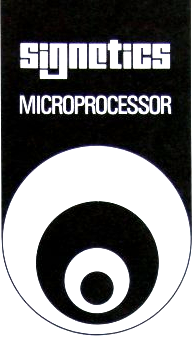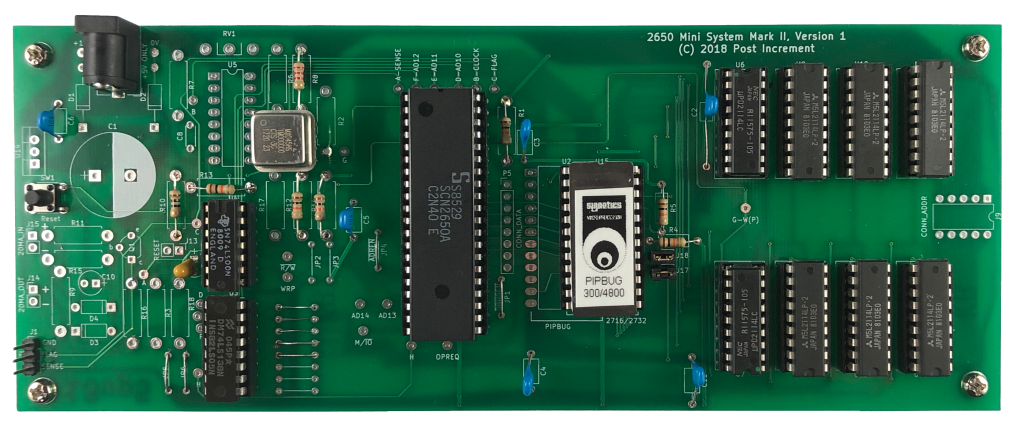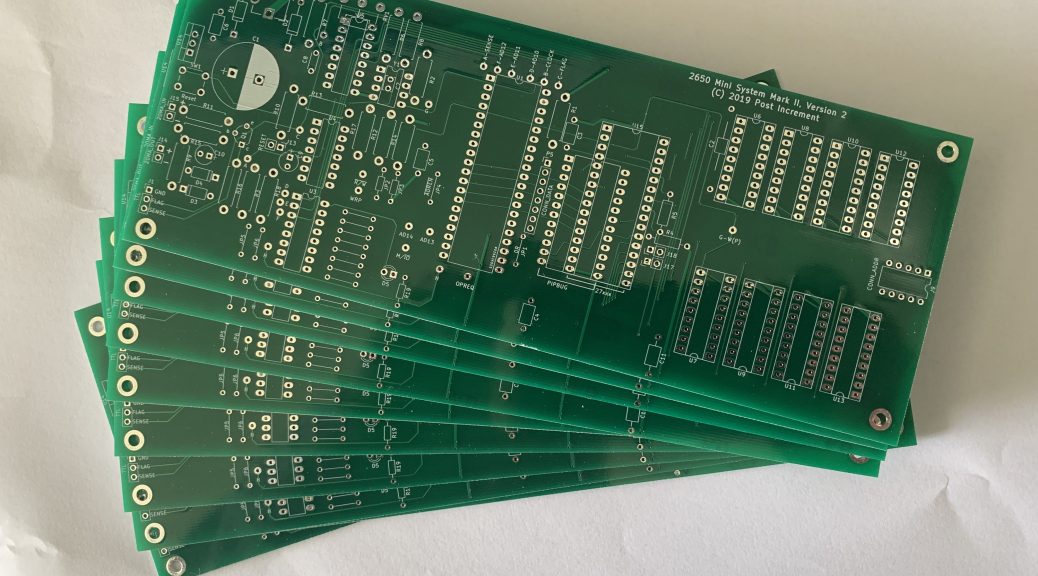The manual for the new 2650 boards can be found here
Category Archives: 2650
new 2650 boards arrived
PCBWay is amazing. Ordered these board Sunday night – they arrive Thursday!
PIPBUG now working
The problem with PIPBUG has been found, and the problem was nothing to do with PIPBUG!

The first 18up5 board that I built has always worked without issues, but the second “pretty” board did not. It took an embarrassingly long time to notice that the second board was missing the interrupt jumpers JP2 and JP3, and that these were also missing from the instructions.
Once these were installed, everything workied again!
If you are having problems with the G command not working, then make sure you have these jumpers installed. These prevent the CPU from getting an immediate (and unhandled) interrupt whenever a user program is executed.
I’ve updated the user manual to include this change, and have uploaded a working 300/4800 PIPBUG image.
Modified PIPBug problems
There is a problem with the modified PIPBUG EPROM that was originally provided for use at 300/4800 baud. It *mostly* worked, but the “G” command was broken.
I’ve uploaded new copies of a PIPBug image from an original 2608 device, but I’ve not yet been able to create or test a new 300/4800 baud version as my EPROM burner is broken.
When I can, I will upload new versions to the git repo at:
Git repo for 2650 remake now available
2650 remake finished and working
The 18up5 board has been tested, and is working as expected. PIPBUG is running at 4800 board, which is a pleasant increase over the original 110.

Remaking the 78up5 2650 mini-computer
Many Australians growing up in the 1970’s and early 80’s had their first exposure to hobbyist computers through projects published in Electronics Australia and Electronics Today International magazines . My first computer was the 2650 minicomputer published in May 1978 which was designated the 78up5.
Inspired by the creation of the Super-80 reproduction, another great Australian computer from the same era, I have created the 18up5 to bring this classic and simple design back to life using KiCad.


